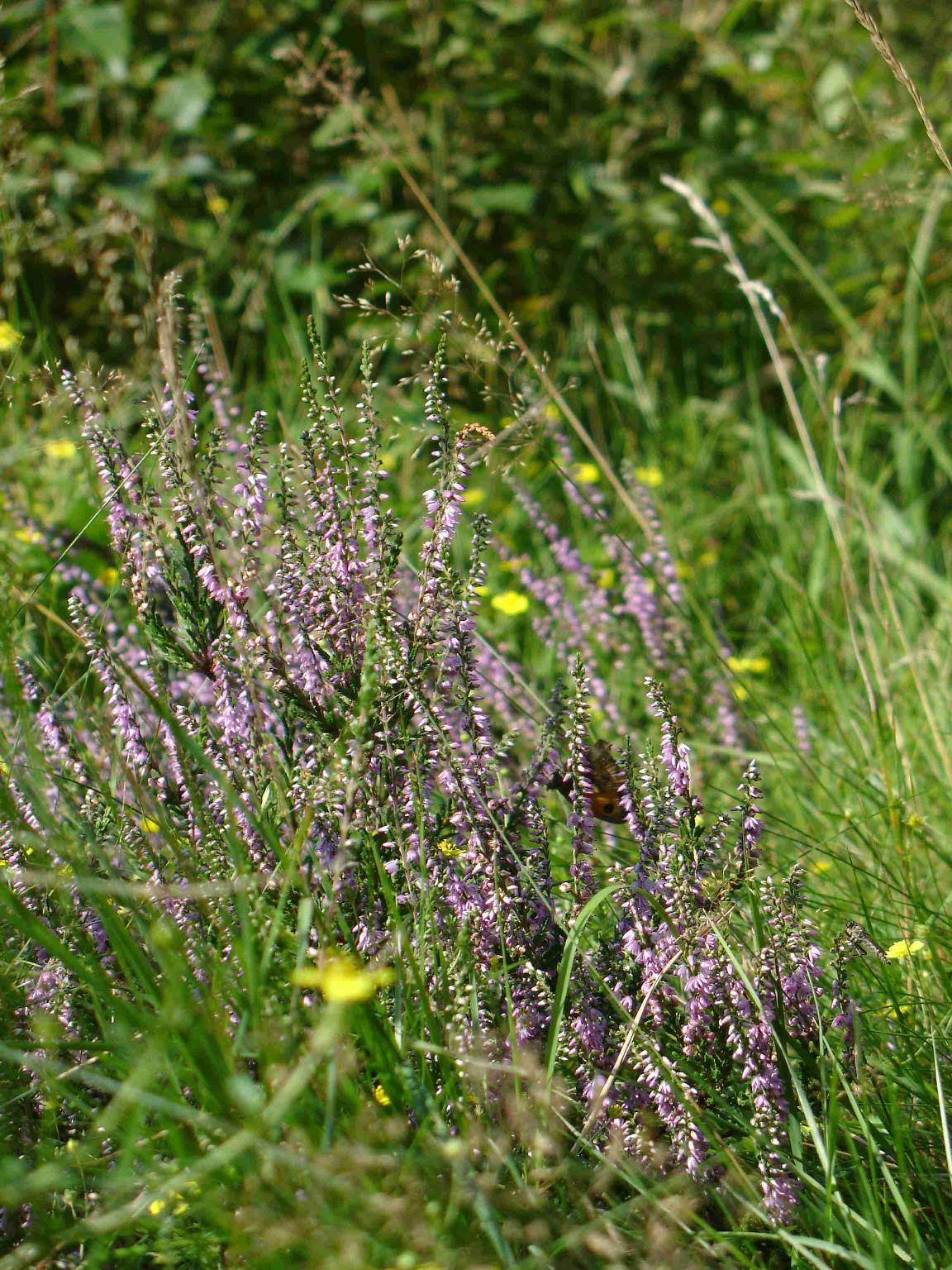Stanmore Common Nature Trail
Long trail post 10:
Ahead is the open space of New Heath. While you are still hidden, check the tops of the pine trees on the other side of the Heath: both buzzard Buteo buteo and red kite Milvus milvus like to perch here and watch for mice and voles in the open ground.
Like much of Stanmore Common, 150 years ago New Heath was open acid grassland and heathland maintained by grazing, but when grazing stopped birch trees invaded. However around the year 2000 a fire killed many of the birch trees. This was recognised as an opportunity to restore the lowland acid heathland, which is a rare and declining habitat; Hounslow Heath, 20 km to the southwest, is the best example north of the Thames. In the winter of 2007/8, supported by a National Lottery grant, the leaf litter and topsoil was scraped off by bulldozer to reveal the gravel and rounded pebbles of the Stanmore Beds. The next spring we sowed heather (Calluna vulgaris) seed from Hounslow Heath. Among the heather are plants that germinated naturally from the bank of seeds that had lain dormant for over 100 years. The heather is still young but already gives a lovely display of purple flowers in late summer.

Image: Heather by Steve Bolsover
Walk ahead through New Heath to return trail post 1. As you go notice the very yellow tussocks of a rare grass called mat-grass Nardus stricta which is only found in nutrient poor acidic soils. If you look closely at this grass you will notice that the flower spikelets come from only one side of the stem.
The bright green spear like tussocky grass with purple flowers or florets held close to the stalk is purple moor grass Molinia coerulea. This is another plant of acid soil. It is aggressive and can outcompete other grasses.
In summer New Heath is home to masses of grasshoppers and crickets. In summer you will see dragonflies and damselflies who were born in the waters of Pynding Mersc further along the trail.
If you look at the path you can clearly see the embedded rounded stones of the Stanmore Beds. You may also see the holes of solitary bees and wasps that have made nests in the hard packed surface.
To
description for return trail post 1
More on some of the birds you are likely to see or hear on the Common
More on the three species of deer on the Common and their tracks
Click
here to learn more about the Harrow Nature Conservation Forum including
guided walks and conservation workdays.




